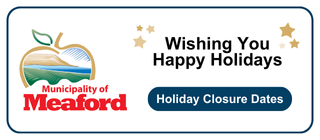 Just six months ago I would have bet with confidence that the Conservative Party would form a majority government when the next federal election, originally scheduled for October 25 of this year, was held. Never would I have imagined even those few short months ago that the Liberal Party of Canada would overcome nearly two years of trailing the Conservatives by double digits in the polls, in fact by as much as 20 points in June of last year, to win another election.
Just six months ago I would have bet with confidence that the Conservative Party would form a majority government when the next federal election, originally scheduled for October 25 of this year, was held. Never would I have imagined even those few short months ago that the Liberal Party of Canada would overcome nearly two years of trailing the Conservatives by double digits in the polls, in fact by as much as 20 points in June of last year, to win another election.
The resignation of the increasingly embattled prime minister in January, in addition to President Trump’s recent rhetoric toward Canada, including threats to our sovereignty, combined with the president’s breaking of the USMCA trade agreement with the implementation of outrageous tariffs that have led to a global trade war, drastically changed the political landscape in this country. That ultimately brought us a most unexpected election result.
This election was clearly highly anticipated by Canadian voters who voted early in record numbers in this election. Nearly 7.5 million Canadians voted early in this election, and nearly 26,000 Bruce-Grey-Owen Sound voted early. Those 26,000 voters represent more than a quarter of all votes cast in the BGOS riding in the 2021 federal election.
I watched with interest as the election results rolled in on the CBC website on Monday night, as the Liberal party’s success confirmed much of the recent polling data, and would indeed hold on to power and form the next government.
With my alarm set for five o’clock on Tuesday morning, I had to call it a night at 11 o’clock before the election results were more final, as it was not yet clear whether the Liberals would form a minority or majority government, but when I started my day on Tuesday morning, my first task was to check the local and national results. My second task was to make some coffee, and start writing this column.
Nationally, on Tuesday morning there were still roughly 25 ridings that had yet to be decided. However with 155 seats won, and a lead in another 13, the Liberal party had won at the very least a strong minority government, coming close, but at least as of Tuesday morning not able to surpass the 172 seats required for a majority government. An impressive turnaround for a party that had endured nearly two years of trailing the Conservatives by double digits in national polling. Monday’s election result gives the Liberals a fourth consecutive term as the governing party on Parliament Hill.
While the Conservatives put up a strong fight against the Liberals in this election, and despite gaining seats in the House of Commons, their leader Pierre Poilievre lost his own seat in Monday’s election. With both the Liberals and the Conservatives gaining seats in the House as a result of this election, those additional seats came largely at the expense of the NDP, Bloc Quebecois, and the Green Party, who combined earned a total 30 seats in the House with less than 15 percent of Canadians’ votes, while the Liberals and Conservatives received a combined 85 percent of the votes cast.
Locally, and not surprisingly, incumbent MP Alex Ruff was once again re-elected, earning 52.4 percent of the votes in Bruce-Grey-Owen Sound, with Liberal party candidate Anne Marie Watson earning 39.3 percent. In the last federal election in 2021, Ruff won this riding with 49.2 percent of the vote, while the same Liberal candidate captured just 25.2 percent of the BGOS vote in that election. In spite of Watson seeing a nearly 15 point gain in this election, it still was not enough to rein in Ruff, who himself saw his vote percentage increase when compared to the last election. This will be Ruff’s third term as MP for BGOS.
As we saw nationally with the result of this election, in Bruce-Grey-Owen Sound, two parties, the Conservatives and the Liberals, earned the vast majority of the vote, with a combined total of nearly 92 percent of all votes cast in the riding.
I do find it concerning that both locally and nationally such a high percentage of the vote was earned by just two parties. Heading toward a two-party political environment might not be healthy or wise – just look south of our border. So hopefully the two-party domination of this election, not seen since 1930, is a brief diversion for Canadian politics; most likely it’s a response of voters to external pressures like the trade war initiated by our closest neighbour, ally, and friend to the south of us.
The challenges for our next federal government will be many, particularly given that we have another minority government. From economic uncertainty and potential chaos, to the increasing frustration felt by many Canadians due to the ever-rising cost of living, to housing affordability to healthcare, we Canadians have a lot of concerns, if not fears, about the months and years to come.
Another major challenge for the governing party to overcome is the clear and deep divide we find ourselves in.
As I wrote on this page earlier this month, “One thing that has been very clear during the first few weeks of the campaign period is that we Canadians are a polarized bunch, and many of the discussions that I have seen on local social media pages have been fierce and they have been at times nasty.”
The dominance of just two parties in this election, with those two parties receiving a combined 85 percent of the votes cast, the separation of the popular vote is razor thin; the Liberals captured roughly 43.5 percent of the votes nationally, while the Conservatives earned 41.4 percent. This highlights my point that we are very clearly divided in this country – that will certainly be a challenge for the government during this next term.
With the Liberals winning a minority government, they are no doubt hoping that the NDP will win enough seats and be willing to play nice with the Liberals in order to form a coalition that would essentially give them majority government power. On Tuesday morning the NDP had won five seats, and were leading in two more ridings which would give the Liberals just enough seats for an effective coalition.
At the end of the day, not much will change in our daily lives after this election, as we have another Liberal government. For Canadians, what matters most, what is occupying our minds and playing on our anxieties are the traditional issues of the economy, cost of living, and healthcare, along with the growing issue of housing affordability, and those are the issues that we Canadians hope will be the prime focus for all parties in the months to come.
Perhaps the biggest challenge for Prime Minister Mark Carney and his Liberal party will be to find some common ground, to bridge some gaps, and to find some way to unite a clearly divided nation.










